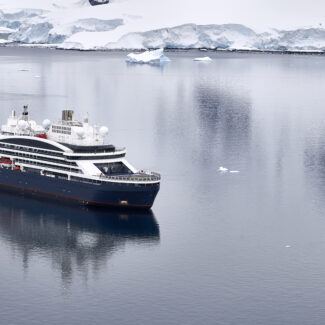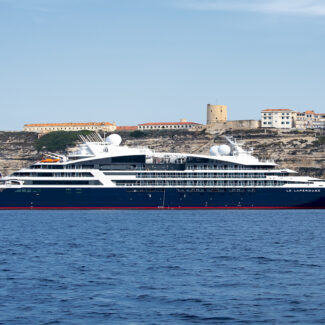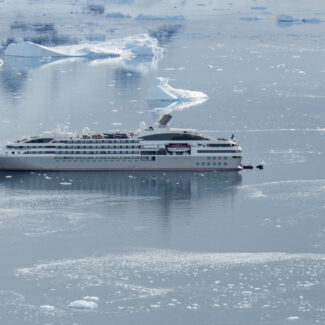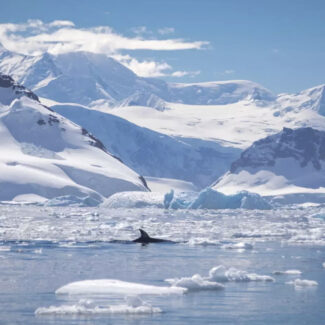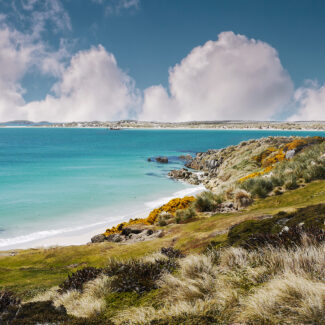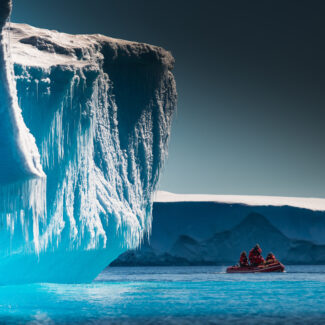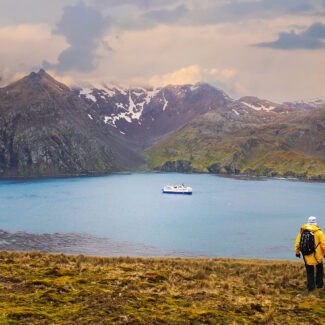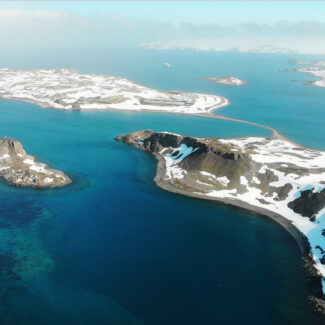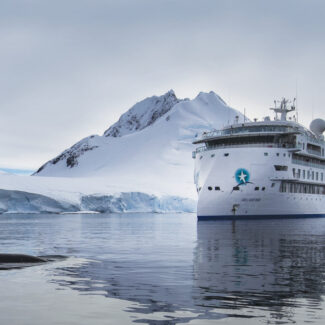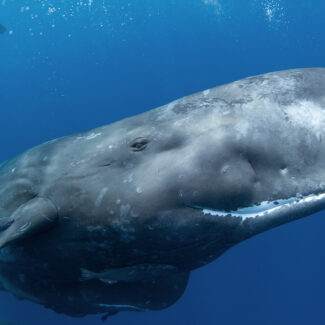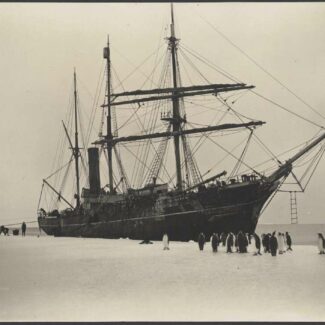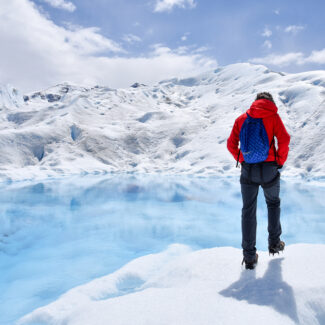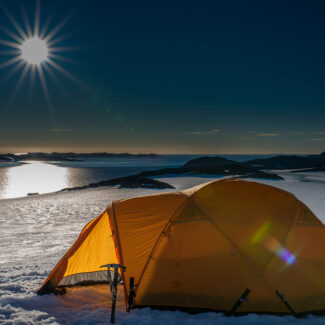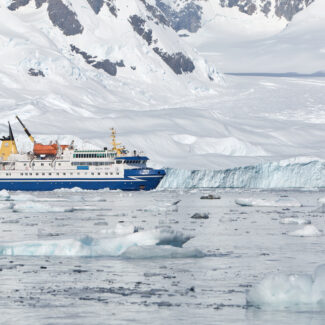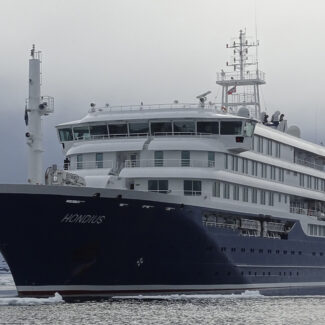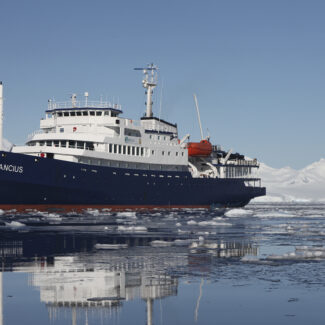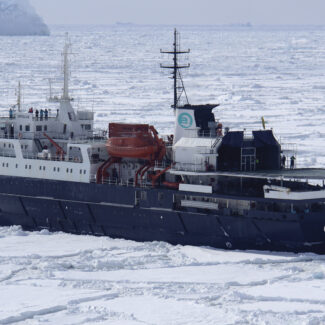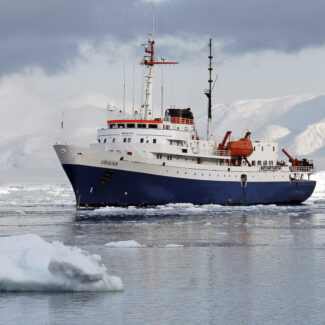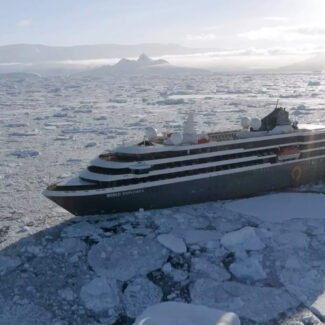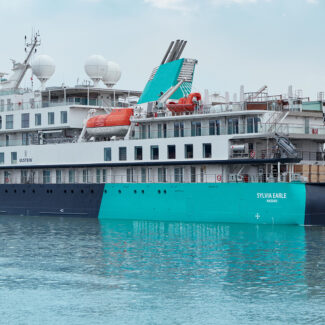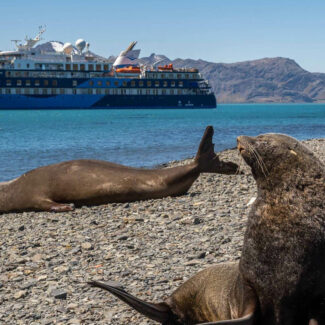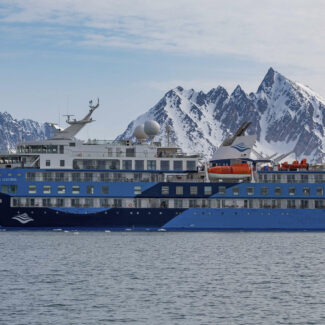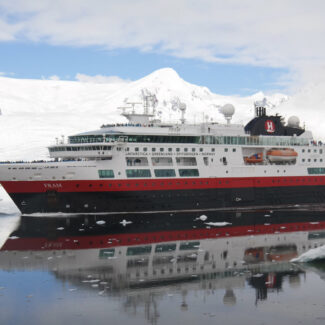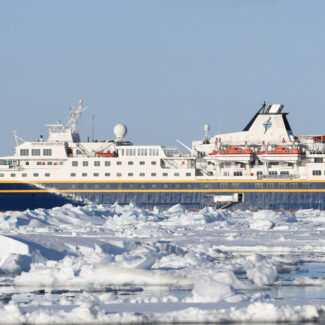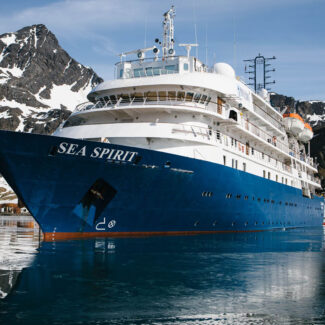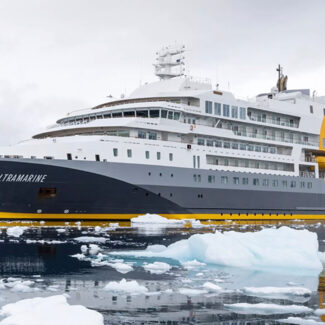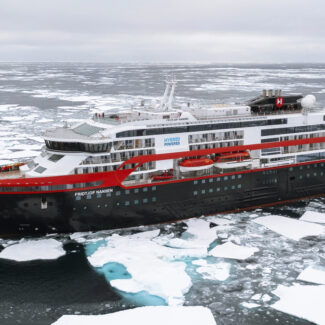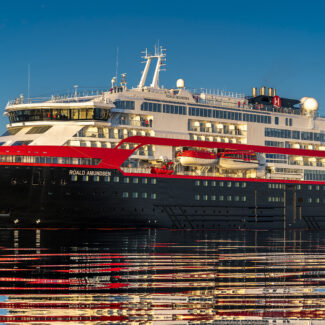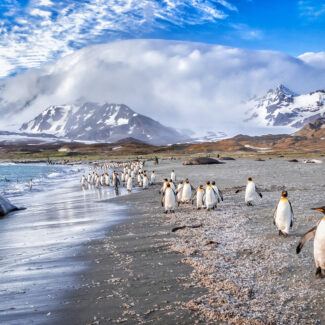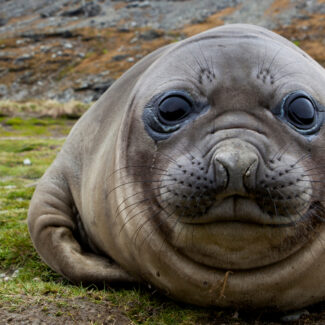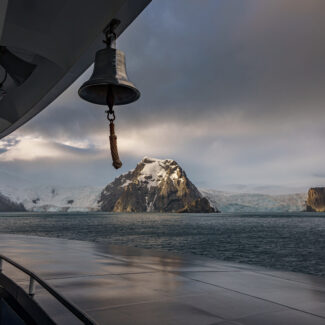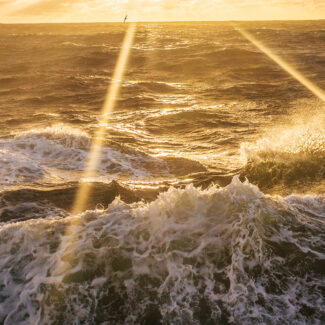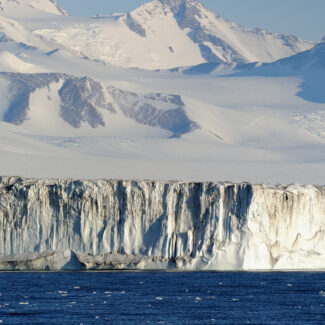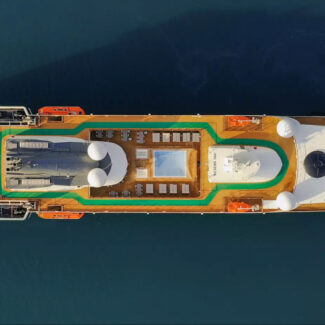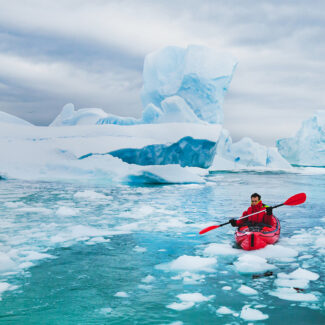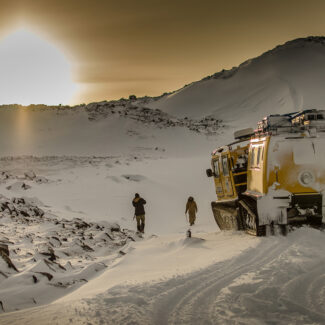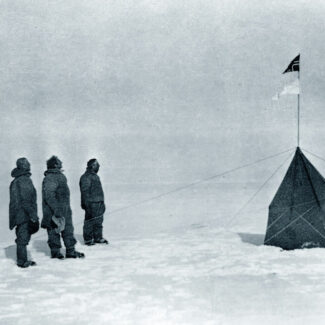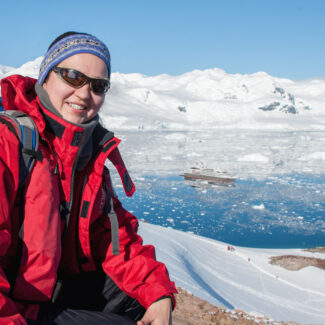The Antarctic Treaty System, Its Signatories & Significance
There’s no other place in the world quite like Antarctica—and not just from an ecological or geophysical standpoint. This enormous continent is under the purview of no single country or government, and is essentially held in trust for legitimately noble and peaceful purposes by a large and diverse group of nations.
Antarctica’s singular status derives from a groundbreaking document called the Antarctic Treaty, and understanding the basics of this formative agreement provides essential context for any visitor to the White Continent.
What is the Antarctic Treaty?
The Antarctic Treaty is a document that establishes the special status of Antarctica as a condominium, managed equally by multiple sovereign nations in collaboration with an emphasis on scientific study, rigorous environmental protection, and peaceful neutrality.
Background of the Antarctic Treaty
The impetus for the Antarctic Treaty came against the backdrop of the Cold War and tensions floating over the various territorial claims that had been made in the White Continent by the middle of the 20th century. The immediate inspiration for the Treaty was the International Geophysical Year (IGY) of 1957-1958, which marshaled dozens of nations to cooperate and collaborate on earth-science research around the globe—not least in Antarctica, where scientific efforts included the establishment of several new bases.
“The IGY was recognized as pivotal to the scientific understanding of Antarctica,” a summary of the Antarctic Treaty prepared by its parties in 1999 explained. “The twelve nations active in Antarctica, nine of which made territorial claims or reserved the right to do so, agreed that their political and legal differences should not interfere with the research program. The outstanding success of the IGY led these nations to agree that peaceful scientific cooperation in the Antarctic should continue indefinitely.”
Port Lockroy landscape
Signing the Antarctic Treaty
Those dozen nations active on the White Continent during the IGY signed the Antarctic Treaty on December 1, 1959 in Washington, D.C. (there because U.S. President Dwight D. Eisenhower had made the initial invitation to discuss such an agreement). The original signatories were:
- Argentina
- Australia
- Belgium
- Chile
- France
- Japan
- New Zealand
- Norway
- South Africa
- U.K.
- U.S.
- U.S.S.R.
Of these nations, seven—Argentina, Australia, Chile, France, New Zealand, Norway, and the U.K.—had existing territorial claims in Antarctica. Two others, the U.S. and U.S.S.R., made no claims, but reserved the right to do so in the future (in legal-speak, they maintained a “basis of claims”).
Key Elements of the Antarctic Treaty
The Antarctic Treaty includes 14 articles—you can take a gander at the original document here, or read it as searchable text here—but its major focus can be boiled down to three main themes.
Most fundamentally, the Treaty asserts that “Antarctica should be used for peaceful purposes only.” (It doesn’t forbid the presence of military equipment and personnel on the White Continent if they’re there to support “scientific research or for any other peaceful purpose.”)
The Treaty also makes explicit the freedom of scientific research in Antarctica and the importance of international cooperation on that front, noting “scientific observations and results from Antarctica shall be exchanged and made freely available.”
Another important agreement under the Treaty regarded Antarctic territorial claims. The Treaty not only forbade the establishment of new claims, but maintained that existing ones could not be enlarged, nor could they be strengthened (or denied) by any actions.
Current Parties to the Antarctic Treaty
The Antarctic Treaty also established that any member of the United Nations could become a signatory. Today, nearly 60 nations are parties to the Treaty: from Bulgaria to Uruguay, from China to South Africa.
Countries “conducting substantial scientific research” in Antarctica may request to become Consultative Parties to the Treaty, with the right to participate in its annual meetings (see below). Seventeen of the parties that acceded to the Treaty since its inception now qualify for that status. Another 27 are Non-Consultative Parties, welcome to attend the meetings but without a say in the decision-making process.
Weddell Sea iceshelf
Antarctic Treaty System Administration
The engine of the Antarctic Treaty System—which includes not only the Treaty itself but its related agreements and recommendations (see below)—is the Antarctic Treaty Consultative Meeting (ATCM), which happens yearly and serves as the platform for Antarctica’s international management.
As mentioned, while all parties to the Treaty are invited to the annual ATCMs, only the Consultative Parties can make decisions concerning the Treaty. The annual ATCMs are hosted by Consultative Parties; hosting cities have included Madrid, Canberra, New Delhi, Beijing, Cape Town, Stockholm, Christchurch, and Santiago, to name a few.
In 2004, the Secretariat of the Antarctic Treaty was created to help facilitate the annual Treaty meetings, support the ATCM and CEP, manage the Treaty System’s documents, and provide educational outreach to the public about the Treaty and its role.
The annual ATCMs also include meetings of the Committee for Environmental Protection (CEP), created as part of the Protocol on Environmental Protection to the Antarctic Treaty (more on that shortly). The CEP concerns itself with ensuring the goals of that protocol are met, addressing such issues as the impacts of tourism, climate change, and non-native species on the Antarctic environment.
Also present at ATCMs are certain official Observers, including the Scientific Committee on Antarctic Research (SCAR), the Commission for the Conservation of Antarctic Marine Living Resources (CCAMLR), and the Council of Managers of National Antarctic Programs. For example, SCAR advises the parties in an “independent and objective” capacity with regard to environmental and conservation issues.
In addition, the ATCM welcomes Invited Experts, which include the International Association of Antarctic Tour Operators (IAATO) and the Antarctic & Southern Ocean Coalition (ASOC).
Associated/Related Agreements
The Antarctic Treaty System includes agreements, recommendations, and other formal additions of one kind or another to the original Treaty. Some of the biggies include the aforementioned Protocol on Environmental Protection to the Antarctic Treaty, adopted by the Treaty’s Consultative Parties in 1991 and put into force in 1998. This Environmental Protocol declared Antarctica as a “natural reserve” and laid out numerous guidelines for the protection of the White Continent’s ecosystem, which are regularly assessed and updated via the ATCM and the CEP.
Other important augmentations of the Treaty include the Conservation of Antarctic Seals, adopted by the ATCM in London in 1972, and the Conservation of Antarctic Marine Living Resources, settled in Canberra in 1981.
Copper Bay – South Islands
Antarctic Treaty Issues: Effectiveness & Expiration
The Antarctic Treaty is rightly held up as an exceptional and unique international agreement that’s managed to stand the test of time in keeping the White Continent out of the control of one or another sovereign nation, off-limits to warmaking and many forms of exploitation, and maintained as a grand polar scientific laboratory and protected wilderness.
Yet there are concerns about its continued effectiveness. For one thing, the Consultative Parties and the CEP have their hands full keeping up with the threat of climate change, already shifting Antarctic ecology in complicated and still only partly understood ways, not to mention the increasing magnitude of tourism.
And the Treaty and its related agreements aren’t permanent. A major question, for example, concerns the future of Antarctica’s mineral resources. The Protocol on Environmental Protection, for example, banned any mineral extraction except for limited scientific purposes, but it’s up for review in 2048, with any Consultative Party given the right to request changes at that point. More than a few scientists and conservationists fear this ban on mineral development could be lifted then, an industrial free-for-all with its inevitable impacts on the environment a potential result.
Other environmental measures have possible expiration dates written into them, such as the recent designation of the Ross Sea as a Marine Protected Area. That move banned all commercial fishing (otherwise widely practiced in the Southern Ocean), but it’s also up for review in a couple of decades.
And the territorial claims held in abeyance by the Treaty may or may not become an issue in the future, if Consultative Parties request an overhaul of the document. As we discuss in more depth here, countries with current territorial claims (and the U.S. and Russia, which reserved the right to make a future claim upon signing the Treaty) have not suggested any retraction of said claims, even as the Treaty’s language has successfully held any measures to “improve” or expand those zones at bay.
Long story short, any advocate for Antarctica—and who doesn’t become one after seeing its majesty firsthand?—ought to pay close attention to the year-by-year administration of the Antarctic Treaty, and ponder what might happen if its visionary tenets are ever overhauled.
Disclaimer
Our travel guides are for informational purposes only. While we aim to provide accurate and up-to-date information, Antarctica Cruises makes no representations as to the accuracy or completeness of any information in our guides or found by following any link on this site.
Antarctica Cruises cannot and will not accept responsibility for any omissions or inaccuracies, or for any consequences arising therefrom, including any losses, injuries, or damages resulting from the display or use of this information.
